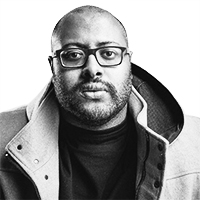Pose reminds us of our history. The history we’d rather not remember, the history we’d rather gloss over, the history that has gone untold for decades.
It’s important that Pose is telling the stories of trans women of color in the ballroom scene in the late ’80s. Because it tells us about the women who made it possible for gay culture to thrive in America. On the occasion of LGBTQ Pride Month, we should remember Marsha P. Johnson, the trans pioneer who was one of the prominent figures in the gay liberation movement that arose from a 1969 police raid on the Stonewall Inn in New York’s Greenwich Village.
There are echoes of this as Blanca spends the second episode of Pose staging a protest against Boy Lounge, a gay bar in the village that caters only to a gay white male clientele. She was refused service not just as a trans woman, but as a trans woman of color. Blanca is protesting for herself as much as she is Damon, the homeless gay black kid she takes in from the streets to become a member of her ball house—The House of Evangelista, named after the “up and coming supermodel Linda Evangelista,” in Blanca’s own words.
Just as Johnson’s rebellion at Stonewall made it possible for gay rights to propel itself onto a larger national stage, Blanca’s revolt at the Boy Lounge is designed to do the same for Damon’s liberation. Seeing the scenes where Blanca sits in a bar amidst indifferent white gay men, it calls to mind the fact that many New York bars were segregated in the early days of the gay community. Even as HIV ravaged the community (Blanca herself is positive and witnesses gay men sobbing as they receive their own diagnoses), the most vulnerable members of queer society were ignored.
The lack of care for stories involving queer people of color, particularly black gay men, is seen in most of our media. In films like The Normal Heart or in plays like The Boys in the Band, where one black character will suffice. Even in Pose Executive Producer Ryan Murphy’s own work, which has largely excluded gay men of color from their narratives until Pose.
It’s what makes Damon’s journey so riveting as it takes place among the stories on the interior lives of Pose’s trans class. It took this historic television series with the largest cast of trans actors for one of the most powerful gay men in Hollywood—Murphy recently inked a $300 million development deal with Netflix—to tell the story of a gay black man with sensitivity.
It almost enough to make you forget the negligence afforded to Alex Newell’s Unique on Glee (almost), when you witness Damon discovering his identity through dance (to Whitney Houston, of course) and then discovering what it means to be a gay man. Going through the standard tropes of being courted by a boy who might not be good for him, while also learning the technicalities of how gay men have sex and also enjoying a love of the ballet. It’s rare to see a black gay man on television like this period, let alone one so empathetic and treated with the weight of an important character.
As Damon’s story continues to unfold, remember the trans cast that allowed us to see a beautiful story like this take place. Allowed us to see a black gay man on television as an object of desire, rather than as an accessory to white characters’ stories.
Murphy has begun to embrace diversity more through the production of series with non-white characters and hiring of behind the scenes talent like Steven Canales, who created Pose, and Janet Mock, who is a writer and producer on Pose. The show itself may prove to be television’s brick thrown at Stonewall, forcing other creators to acknowledge that there are other queer stories to be told besides those of only white gay men.
Just last week, Greg Berlanti joined Murphy’s million-dollar club by inking his own lucrative deal of more than $300 million with Warner Bros. Berlanti is also a producer whose gay characters tend to be white more often than not. Take for instance the film Love, Simon, where he relegated the much more interesting character Ethan (Clark Moore) to the sidelines to prop up the rather tame story of the film’s protagonist, Simon Spier.
How many more Blancas must take a seat of protest in Hollywood’s Boy Lounge so that we see queer men of color be in the overall gay narrative and not just as afterthoughts?






